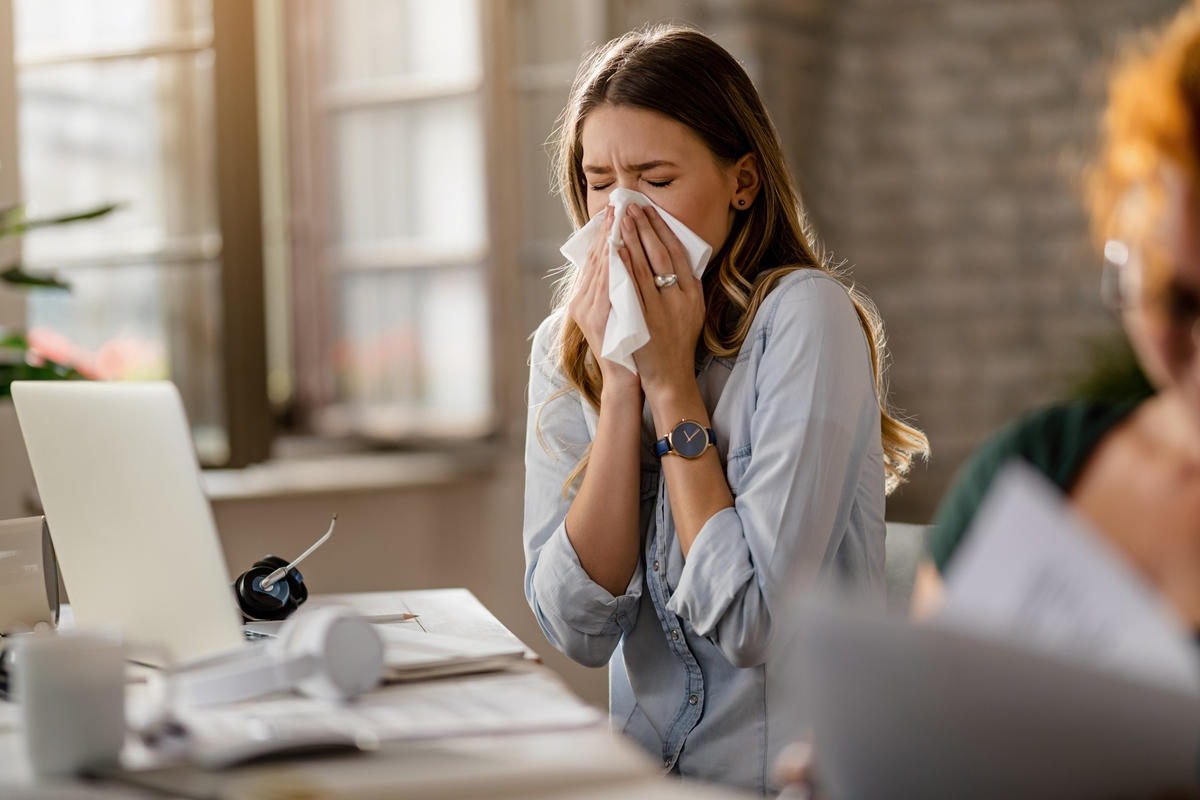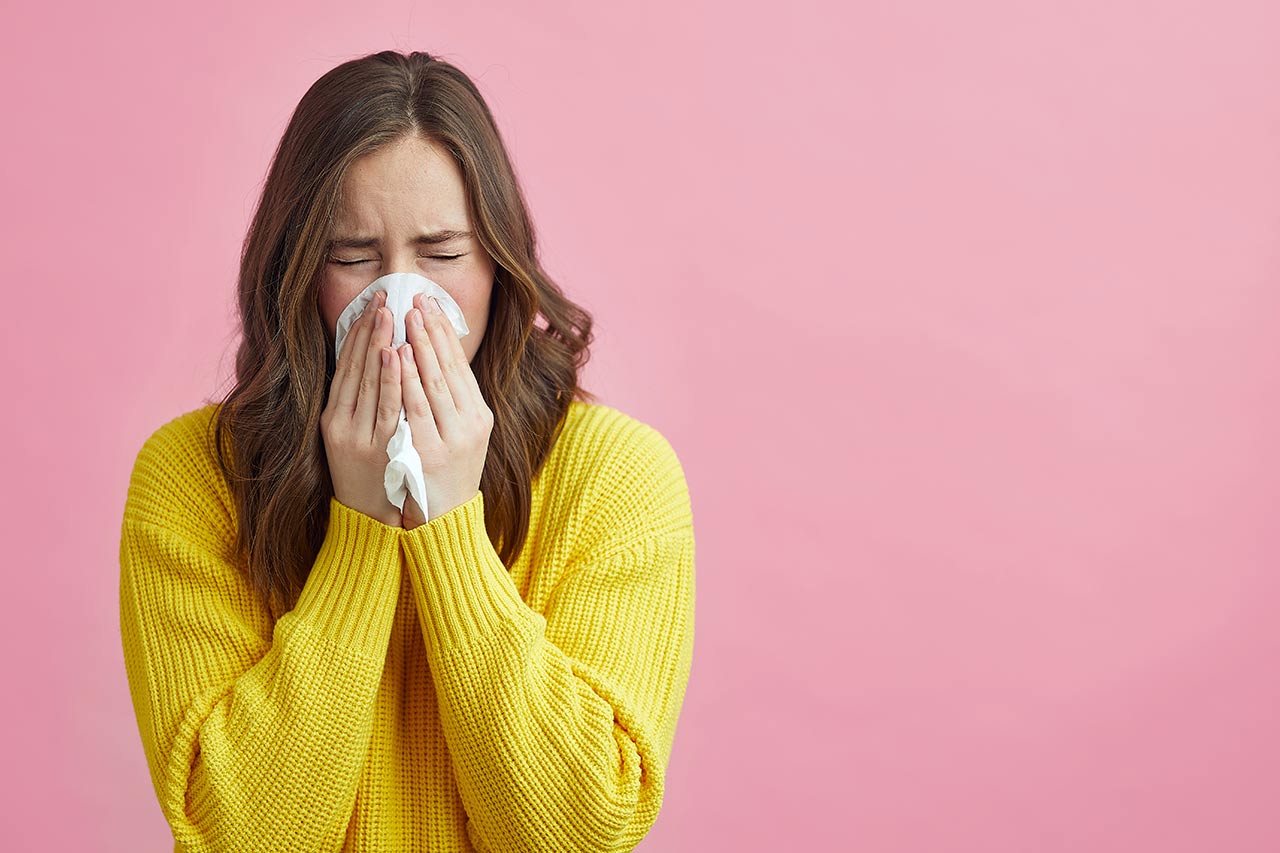What are allergies?
Allergies are disorders of the immune system that lead to a loss of tolerance to apparently harmless substances called allergens. There are 5 main types of allergies: respiratory (e.g., pollen, dust mites, mold, animal hair), food, antibiotics, venom and skin.
Two conditions must be met for an allergy to occur:
- genetic predisposition
- exposure to the allergenic substance
Most allergies are caused by antibodies called type E immunoglobulins (IgE). These types of allergies are referred to as “IgE-dependent”. In non-allergic people, the normal function of IgE antibodies is to fight parasites. These antibodies are commonly produced by the circulating immune system in the free state in blood serum, and are also found associated with immune system cells. This explains the localization of allergic symptoms. When an allergen binds to IgE associated with one of these cells, the latter is “activated”. It then releases chemical mediators, including histamines, tryptases, leukotrienes and prostaglandins. These molecules are responsible for the redness, secretions and swelling observed during an allergic reaction.
Allergic symptoms appear very rapidly, from a few minutes to a few hours after contact with the allergen. They may be mild (eczema, conjunctivitis and rhinitis), moderate (itching and asthma), or severe (severe asthma and anaphylactic shock). In some cases, they can even lead to death.
How are allergic diseases treated?
The average delay between the appearance of the first symptoms and the treatment of an allergy is seven years in France. This delay is due to frequent self-medication and/or lack of referral to a specialist allergist capable of treating the symptoms and cause of the allergy. Certain “symptomatic” drugs treat symptoms without directly addressing the cause; these drugs are often available without prescription from the pharmacist, and make self-medication and lack of referral a frequent occurrence. Examples include antihistamines and corticoids.
There are also so-called “curative” treatments, which are used when symptomatic treatments are no longer sufficient to control the allergy. These are prescribed by a doctor specializing in allergy treatment, and are available from the age of five. These treatments involve immunotherapy or “desensitization”, whereby allergen extracts are gradually administered in small doses to make the person tolerant to the substance administered. Immunotherapy requires an IgE test to precisely characterize the patient’s allergy. Depending on the results of the allergy test, the treatment is administered either by subcutaneous injection, under medical supervision, or by sublingual administration. Sublingual administration (NPP or tablets) is most often recommended, as it is the safest method and the only one to be reimbursed.
What are the challenges facing allergy management in France and around the world?
Issue n°1: Improving screening and follow-up in areas with low medical density
Allergies are pathologies whose management can be controlled as long as the patient pathway is respected. However, when screening and follow-up are poorly carried out, the most serious complications can turn allergies into a serious public health problem.
In France, in certain areas with low medical density (such as the overseas territories), the absence of healthcare professionals means that allergies are less effectively managed. In Martinique, for example, there is a high prevalence of severe asthma (22% in children and 9% in adults, compared with 11% and 7% respectively on average in France), due to late arrival in the care chain. Allergy can therefore be considered a real public health problem, with twice as many deaths linked to this pathology in Martinique than in mainland France.
Find out how we can support you in your patient pathway projects >
Issue n°2: Managing and preventing the increasing prevalence of allergies
The problem of managing allergies is likely to become more acute in the years to come. Allergy is already considered by the WHO to be the 4th most prevalent disease in the world, after cancer, cardiovascular pathologies, and AIDS. This figure is set to rise, with half the world’s population being allergic by 2050. In 2010, this represented just 30% of the population, compared with 2-3% in the 1970s. According to Hans Oettgen of the Department of Allergology at Boston Children’s Hospital, this evolution cannot be explained by genetic mechanisms, as the change in the population is far too rapid. On the other hand, several other hypotheses tend to explain this increase in the percentage of the allergic population, such as:
- Increased hygiene, which limits exposure to microbes and prevents our immune system from reacting properly when confronted with allergens
- Deterioration in the quality of the environment, particularly pollution, which can potentiate the impact of certain allergens while aggravating the symptoms of allergic rhinitis
As the prevalence of allergy is on the rise, access to healthcare in certain regions is becoming more complex, and the number of severe asthma complications is likely to increase. It is therefore essential for public policy-makers to seize the opportunity to build coherent plans in line with local health policies. Alcimed is at your side to help you meet the challenges of allergy management. Don’t hesitate to contact our team!
About the author,
Mathieu, Consultant with Alcimed’s Innovation and Public Policy team in France



